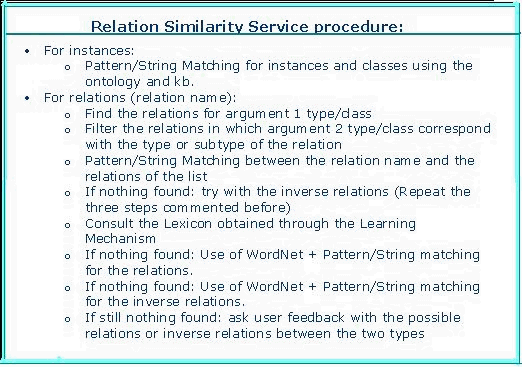The RSS is the main component responsible for generating an ontology-compliant logical query. Essentially the RSS tries to make sense of the input query by looking at the structure of the ontology and the information stored in the target KBs, as well as using string similarity matching and generic lexical resources, such as WordNet and domain-dependent lexicon obtained through the use of a Learning mechanism.

An important aspect of the RSS is that it is interactive. In other words when the RSS is not sure about how to disambiguate between two or more possible terms or relations in other to interpret a query, or when the query is ambiguous, then it will ask the user for help.
The data model or Onto-Triple employed by the RSS is slightly more complicated than the one used by the Linguistic component , mainly because the intermediate or triple-base representations are not longer strings but terms which have an equivalent representation within the ontology in use, that is to say they are an indexation of a term in the ontology
Moreover, the category to which each Onto-Triple belongs to and the number of Onto-Triples can be modified during the creation of the different elements in the Onto-Triple by the RSS, in order to satisfy the appropriate mappings of the triple within the ontology. The RSS is also responsible of dealing with ambiguities which care
The RSS is also responsible of dealing with the ambiguities which characterize the natural language. The semantics obtained through the use of ontologies plus the user's interaction is the key for understanding natural language, and this is what makes the different with other question answering tools. As a conclusion, AquaLog is an elegant natural language interface for the Semantic Web.
There is not a single strategy here. An example of the basic procedure for basic queries is shown in the next table




